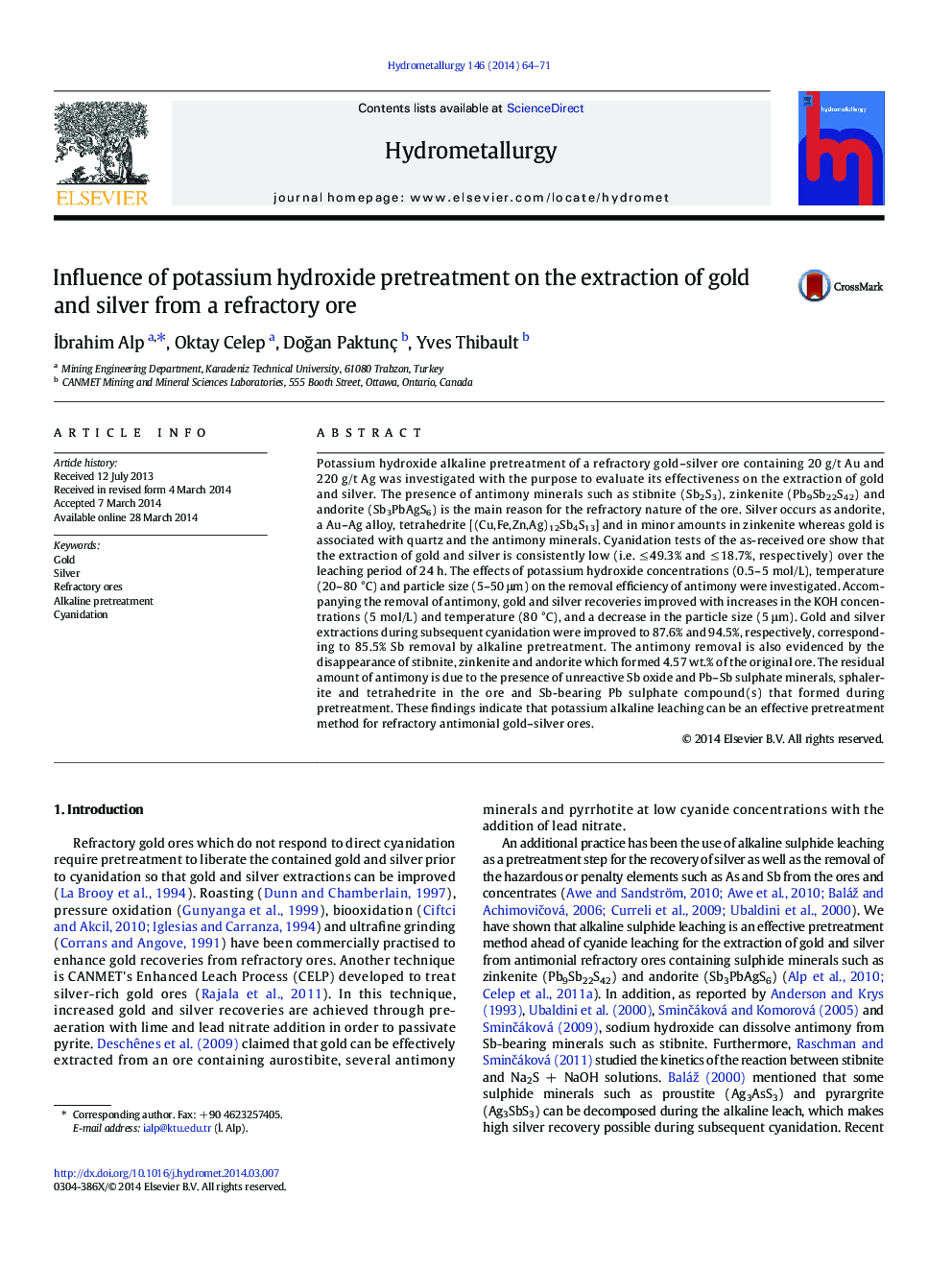| کد مقاله | کد نشریه | سال انتشار | مقاله انگلیسی | نسخه تمام متن |
|---|---|---|---|---|
| 212130 | 462034 | 2014 | 8 صفحه PDF | دانلود رایگان |
• The extraction of metals from the ore is low (≤ 49.3% Au, ≤ 18.7% Ag) in cyanidation.
• The presence of Sb minerals is the main reason of the refractory nature of the ore.
• Antimony removal from the ore was achieved with KOH pretreatment.
• Au and Ag extractions in cyanidation were improved to 87.6% and 94.5%, respectively.
• KOH pretreatment leaching can be effective for refractory antimonial Au–Ag ores.
Potassium hydroxide alkaline pretreatment of a refractory gold–silver ore containing 20 g/t Au and 220 g/t Ag was investigated with the purpose to evaluate its effectiveness on the extraction of gold and silver. The presence of antimony minerals such as stibnite (Sb2S3), zinkenite (Pb9Sb22S42) and andorite (Sb3PbAgS6) is the main reason for the refractory nature of the ore. Silver occurs as andorite, a Au–Ag alloy, tetrahedrite [(Cu,Fe,Zn,Ag)12Sb4S13] and in minor amounts in zinkenite whereas gold is associated with quartz and the antimony minerals. Cyanidation tests of the as-received ore show that the extraction of gold and silver is consistently low (i.e. ≤ 49.3% and ≤ 18.7%, respectively) over the leaching period of 24 h. The effects of potassium hydroxide concentrations (0.5–5 mol/L), temperature (20–80 °C) and particle size (5–50 μm) on the removal efficiency of antimony were investigated. Accompanying the removal of antimony, gold and silver recoveries improved with increases in the KOH concentrations (5 mol/L) and temperature (80 °C), and a decrease in the particle size (5 μm). Gold and silver extractions during subsequent cyanidation were improved to 87.6% and 94.5%, respectively, corresponding to 85.5% Sb removal by alkaline pretreatment. The antimony removal is also evidenced by the disappearance of stibnite, zinkenite and andorite which formed 4.57 wt.% of the original ore. The residual amount of antimony is due to the presence of unreactive Sb oxide and Pb–Sb sulphate minerals, sphalerite and tetrahedrite in the ore and Sb-bearing Pb sulphate compound(s) that formed during pretreatment. These findings indicate that potassium alkaline leaching can be an effective pretreatment method for refractory antimonial gold–silver ores.
Figure optionsDownload as PowerPoint slide
Journal: Hydrometallurgy - Volume 146, May 2014, Pages 64–71
